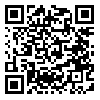Volume 7, Issue 1 (Spring & Summer 2023)
J Res Urol 2023, 7(1): 1-14 |
Back to browse issues page
Download citation:
BibTeX | RIS | EndNote | Medlars | ProCite | Reference Manager | RefWorks
Send citation to:



BibTeX | RIS | EndNote | Medlars | ProCite | Reference Manager | RefWorks
Send citation to:
Mirzaei-Alavijeh M, Ashayeri S, Moradinazar M, Saadatfar A, Rafiee-Pour M, Jalilian F. Prostate Cancer Screening Promotion Program: Application of the Health Action Process Approach. J Res Urol 2023; 7 (1) :1-14
URL: http://urology.umsha.ac.ir/article-1-141-en.html
URL: http://urology.umsha.ac.ir/article-1-141-en.html
Mehdi Mirzaei-Alavijeh1 

 , Sohrab Ashayeri2
, Sohrab Ashayeri2 
 , Mehdi Moradinazar3
, Mehdi Moradinazar3 
 , Abdollah Saadatfar3
, Abdollah Saadatfar3 
 , Mosayeb Rafiee-Pour4
, Mosayeb Rafiee-Pour4 
 , Farzad Jalilian *5
, Farzad Jalilian *5 




 , Sohrab Ashayeri2
, Sohrab Ashayeri2 
 , Mehdi Moradinazar3
, Mehdi Moradinazar3 
 , Abdollah Saadatfar3
, Abdollah Saadatfar3 
 , Mosayeb Rafiee-Pour4
, Mosayeb Rafiee-Pour4 
 , Farzad Jalilian *5
, Farzad Jalilian *5 


1- Social Development and Health Promotion Research Center, Health Institute, Kermanshah University of Medical Sciences, Kermanshah, Iran
2- Department of Health Education and Promotion, School of Health, Kermanshah University of Medical Sciences, Kermanshah, Iran
3- Clinical Research Development Center, Motazedi Hospital, Kermanshah University of Medical Sciences, Kermanshah, Iran
4- Department of Urology, Ahvaz Jundishapur University of Medical Sciences, Ahvaz, Iran
5- Social Development and Health Promotion Research Center, Health Institute, Kermanshah University of Medical Sciences, Kermanshah, Iran ,f_jalilian@yahoo.com
2- Department of Health Education and Promotion, School of Health, Kermanshah University of Medical Sciences, Kermanshah, Iran
3- Clinical Research Development Center, Motazedi Hospital, Kermanshah University of Medical Sciences, Kermanshah, Iran
4- Department of Urology, Ahvaz Jundishapur University of Medical Sciences, Ahvaz, Iran
5- Social Development and Health Promotion Research Center, Health Institute, Kermanshah University of Medical Sciences, Kermanshah, Iran ,
Abstract: (3443 Views)
Background and Objective: Early detection and diagnosis of prostate cancer can greatly reduce its mortality rate. In this regard, the present study aimed to determine the efficacy of the prostate cancer screening promotion program based on the health action process approach (HAPA) in male patients aged 50-69 years in Kermanshah using a Smartphone application.
Materials and Methods: The present quasi-experimental study was conducted on intervention and control groups (40 people each) in 2023. Information was collected using a questionnaire, and the obtained information was analyzed in SPSS software (version 16).
Results: After the program was implemented, a significant difference was observed between the intervention and control groups in terms of the mean scores of action self-efficacy (P<0.001), intention (P<0.001), action planning (P=0.005), coping planning (P=0.042), coping self-efficacy (P=0.012), recovery self-efficacy (P<0.001), and self-monitoring (P=0.016). Effect size for risk perception, outcome expectancies, action self-efficacy, intention, action planning, coping planning, coping self-efficacy, recovery self-efficacy, and self-monitoring were 0.44, 0.43, 0.97, 0.77, 1.12, 0.46, 0.58, 0.92, and 0.55, respectively.
Conclusion: Use of Smartphone applications based on HAPA can provide valuable insights for the enhancement of the acceptance of prostate cancer screening tests. It is recommended to utilize these applications for the development and implementation of health promotion programs for males.
Materials and Methods: The present quasi-experimental study was conducted on intervention and control groups (40 people each) in 2023. Information was collected using a questionnaire, and the obtained information was analyzed in SPSS software (version 16).
Results: After the program was implemented, a significant difference was observed between the intervention and control groups in terms of the mean scores of action self-efficacy (P<0.001), intention (P<0.001), action planning (P=0.005), coping planning (P=0.042), coping self-efficacy (P=0.012), recovery self-efficacy (P<0.001), and self-monitoring (P=0.016). Effect size for risk perception, outcome expectancies, action self-efficacy, intention, action planning, coping planning, coping self-efficacy, recovery self-efficacy, and self-monitoring were 0.44, 0.43, 0.97, 0.77, 1.12, 0.46, 0.58, 0.92, and 0.55, respectively.
Conclusion: Use of Smartphone applications based on HAPA can provide valuable insights for the enhancement of the acceptance of prostate cancer screening tests. It is recommended to utilize these applications for the development and implementation of health promotion programs for males.
Type of Study: Research |
Subject:
Urologic oncology
Received: 2024/01/13 | Accepted: 2024/05/21 | Published: 2024/08/31
Received: 2024/01/13 | Accepted: 2024/05/21 | Published: 2024/08/31
Send email to the article author
| Rights and permissions | |
 |
This work is licensed under a Creative Commons Attribution-NonCommercial 4.0 International License. |




